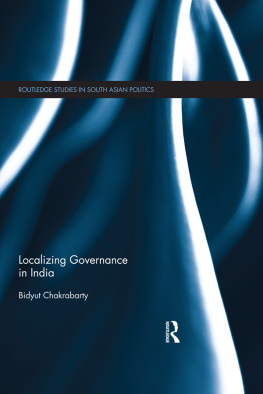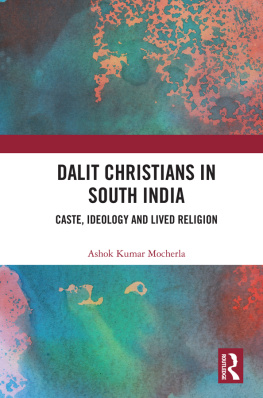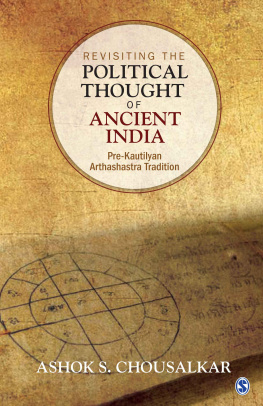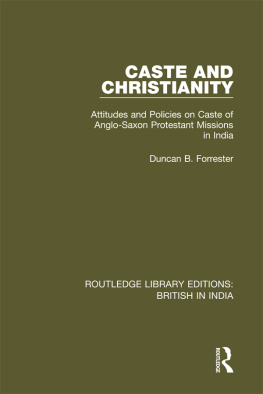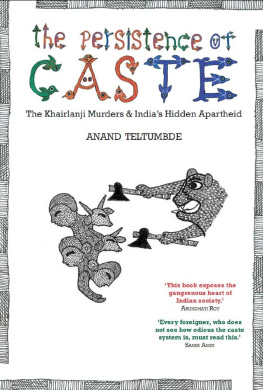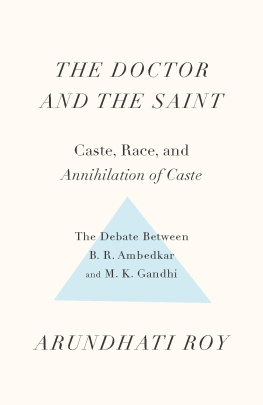Ashok Vajpeyi is a Hindi poet and lover of arts, apart from being a noted cultural and arts administrator, and a former civil servant. He was Chairman, Lalit Kala Akademi, from 2008 to 2011. He is a recipient of the Sahitya Akademi Award (1994), Dayawati Kavi Shekhar Samman (1994) and Kabir Samman (2006). He has also been decorated by the President of the Republic of Poland with the outstanding national award The Officers Cross of Merit of the Republic of Poland (2004), and by the French government as Officier de LOrdre des Arts et des Lettres (2005). His publications include poetry collections Kahin Nahin Vahin, Bahuri Akela, Ibarat Se Giri Matrayein, Kahin Koi Darwaza (Hindi) and A Name for Every Leaf (English). His critical works include Philhal, Samay Se Bahar, Kavita Ke Teen Darwaze (Hindi) and Raza: A Life in Art (English).
CONTENTS
INTRODUCTION
India and the Plurality of Dissent
Bow to him who is the word
both occult and manifest,
his glory revealed by the power
of the independent mind.
From Subhashitavali, an anthology of Sanskrit verse compiled in the fifteenth century by Vallabhadeva (translated by A.N.D. Haksar)
It can be reasonably argued that in India, from the beginning of its civilizational enterprise, nothing has remained singular for long; in fact, nothing has been, in a sense, allowed to be singular for long. Whether God or religion, philosophy or metaphysics, language or custom, cuisine or costume, every realm is marked by plurality. It is not accidental that in many Western languages the word India is pluralIndes, meaning Indias.
It is impossible, therefore, to talk about the Indian tradition: there are multiple traditions, all authentically and robustly Indian. Even within a single major religion, Hinduism, there are four Vedas, millions of gods, eighteen Upanishads, six schools of classical philosophy, two epics (and numerous versions of both), four purusharthas or goals of life. It can be easily claimed that India as a countryand, equally, as a civilizationis an unending celebration of human plurality. This is how it has survived through millennia.
Central to the plural tradition, or sensibility, is the notion that there are many ways of looking at and living in the world. Plurality accommodates differences; and differences, in their turn, embody and enact dissent. When the Vedic seer ordains, Aano Bhadrah Kratvo Yantu Vishwatah (Let noble thoughts come to us from all directions), what is being sanctified is the idea that there are many different ideas and truths spread all over the world and they are all welcome. Another Vedic saying, Vasudhaiva Kutumbakam (The world is one family), embraces all humanity, and therefore every idea, emotion, lifestyle that exists. Such openness and acceptance, or, at the very least, accommodation, is the core of the Vedic cosmic vision. Through the millennia, many dilutions and distortions may have occurred in real life and practice, as would inevitably happen everywhere, but Indian tradition and civilization never lost this remarkable, largely inclusive vision.
Dr Amartya Sen has pointed out in his book The Argumentative Indian that the Nasadiya Sukta, the Hymn of Creation, a major verse in the Rig Veda, ends with radical doubt:
Who really knows? Who will here proclaim it? Whence was it produced?
Whence is this creation? The gods came afterwards, with the creation of this universe. Who then knows whence it has risen?
Whence this creation has risenperhaps it formed itself, or perhaps it did notthe one who looks down on it, in the highest heaven, only he knowsor perhaps he does not know.
This is evidently the beginning of Indian skepticism. Nothing, not even the creation of the universe, or the supremacy and omniscience of God, is taken for granted. It may be noted that the hymn is also clear that the gods came after creationthey are, in that sense, no different from fish or trees or human beings. Into a major sukta of perhaps the oldest and one of the most important texts of Hinduism, then, the Vedic seers inserted a deeply metaphysical note of dissent.
A similar note was struck by a rishi named Kauntya, who declared that if what had been said in the Vedas could not be communicated in any other language or in any other way, the Vedas must be meaningless. This was pure blasphemy since the Vedas were held to be inviolable, apourusheya. But Yaska, an ancient grammarian and commentator on the Vedas, includes this view in Nirukta, his compilation of Vedic interpretations which became one of the central texts of Sanskrit scholarship.
In these and other passages from the earliest texts of Hinduism, there is ample evidence that the Indian traditions begin with enquiry, doubt and challengethe hallmarks of plurality.
These traditions continued and grew with the other major religions that arose in IndiaBuddhism, Jainism and, later, Sikhism. Their founders, Buddha, Mahavir and Nanak, dissented from the ritualistic and caste rigidities of orthodox Hinduism to discover new paths of spirituality, metaphysics, social organization and liberation. Here was religious plurality being created through religious dissent. Buddhism and Jainism were particularly radical faiths; they were not posited on the notion and existence of God, and they rejected completely the scriptures of Hinduism and many of its foundational concepts like the eternal soul and the four goals of life. The rejection was forceful, fearless and rooted in intellectual inquiry and debate.
Buddha, the great challenger, was later included as one of the ten avatars of GodDashavatarin classical Hinduism, along with Rama and Krishna. Here, too, was proof of Indias irrepressible plurality and genius for accommodation!
~
There was also a strong and multi-layered tradition of disagreement and debate in the fields of thought, conduct, knowledge and morality in pre-modern India. Two aspects are easily noticeable. First, no one could propose a new concept or insight or theory without first faithfully summarizing the existing body of reflection on it. This was poorvapaksha, and only then could there be uttarpakshathe thinker or debater proposing that which he or she claimed to be different or new, delineating it in meticulous detail. This was the standard intellectual practice.
Secondly, any new or different idea, theory or insight had to be publicly debated and accepted before being given a place in the scheme of things. The institution of shastrarthphilosophical contestswas well entrenched and there are many examples of this. The most celebrated instance is of the great thinker Shankaracharya having to engage in a shastrarth with Mandana Mishra and his wife Ubhaya Bharati over several days. There are many examples of such discussions and debates between Shaivites and Vaishnavites, Hindus and Buddhists, Buddhists and Jains; between different schools of philosophical and ethical thought; between agnostics and believers. The interrogative and dialogical ethos also finds place in literature, and the epic Mahabharata is full of such dialogues and debates. It is apt of Dr Amartya Sen to have called us argumentative Indians: these age-old conventions of dissent, dialogue, debate and disagreement are ample evidence that India created a civilization which was marked by curiosity and quest, by questions and doubts, by accommodation and acceptance of contrary viewpoints.
It cannot be denied that India had a very restrictive, indefensible caste system and many elements of a feudal structure. But simultaneously it also had a republic of the imagination in which ideas and wisdom had a democratic remit. Almost everything, including God, gods, spiritual ideas and practices, metaphysical and philosophical concepts, notions of morality and political structures, has been brought into the realm of debate and interrogation. When in 1950 we declared ourselves a democracy it was, in many ways, a culmination of some age-old ideas of the democratic spirit.
Next page


